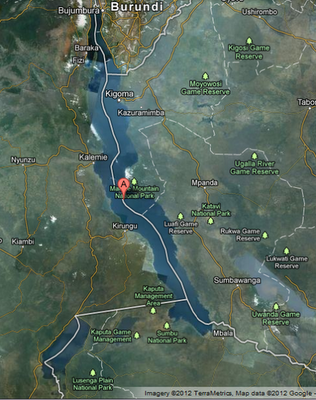Short URL for the story: http://goo.gl/0529P
The invasive zeal of
According to a new report published by the Invasive Species Initiative under the International
Union for Conservation of Nature (IUCN) , the Caster oil
plant which is native to India is one of the invasive plants that
raise a major threat to the second largest and second deepest lake in the world –
Lake Tanganyika - shared by Burundi,Zambia,Tanzania and Democratic Republic of the Congo (DRC) .
 |
| Dense Growth of Ricinus communis |
The report says that Ricinus communis, commonly known as Castor oil
plant in English and Kadalavanakku in Malayalam, is a usual plant found in
India. The plant, according to IUCN report, has shown invasive nature in other habitats
and is a major invasive threat to Lake Tanganyika.
Lake Tanganyika has at least 250 species of endemic cichlid
fish and many endemic water plants. But the presence of invasive plants around
the lake is threatening the natural habitat of the lake as well as the
existence of native fauna and flora.
The invasive zeal of
Biological invasion is a wide phenomenon seen across the globe. It happens when a non-native species is introduced to a new environment, and it spreads virulently to cause damage to native organisms. Ricinus communis, due to its invasive nature, now has spread across all the tropical regions, says the report.
According to the study, the invasive nature of the plant makes it
capable of displacing native plant species from a habitat. The impact
will be more visible in the case of riparian areas and drainages. The seeds of
the castor oil plant also give the plant some upper hand among native plants, shows the report.
The Castor oil seeds have a worthy appendage known as caruncle
which attracts ants as the major seed dispersal agents for the plant. Moreover, the seeds are among the first to
germinate after a fire season, allowing the plant to have a competitive
advantage over other native plants over the fight for resources.
 |
| Lake Tanganyika Image courtesy : Google Maps |
The plant is a fast growing suckering perennial shrub and often attains
the size of a small tree. Due to this nature, when they colonize in already
disturbed habitats, they grow faster, often shade
over the native plants and seedlings, gradually weakening the strength of the
native plant species.
Major reasons for the spread of the plant
According to the study, the ornamental plant trade is a major source
through which the plant has got its grip around Lake Tanganyika . The
practice of cultivation for extracting Castor oil is also a reason, points
out the study. Apart from these, road building machinery, earth moving
equipment and dumped garden waste also spreads the seeds of the plant.
The study which is preliminary in nature is the first of its kind to take
place at Lake Tanganyika. It has listed 31 invasive plants which are raising
serious threat to the water body.

No comments:
Post a Comment
Please feel free to have your say on our stories. Comments will be moderated. anonymous Comments will not be approved. No links in the comment body unless meant for sharing a very relevant info.